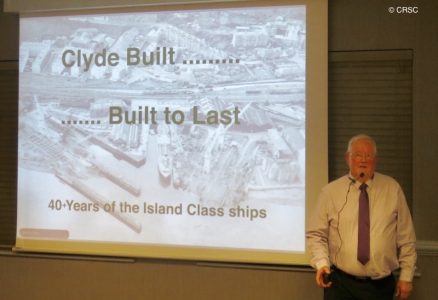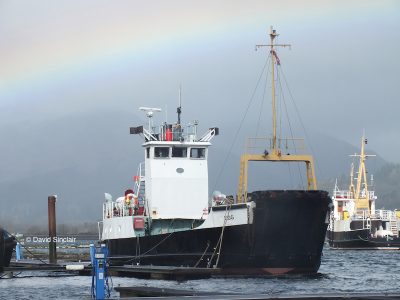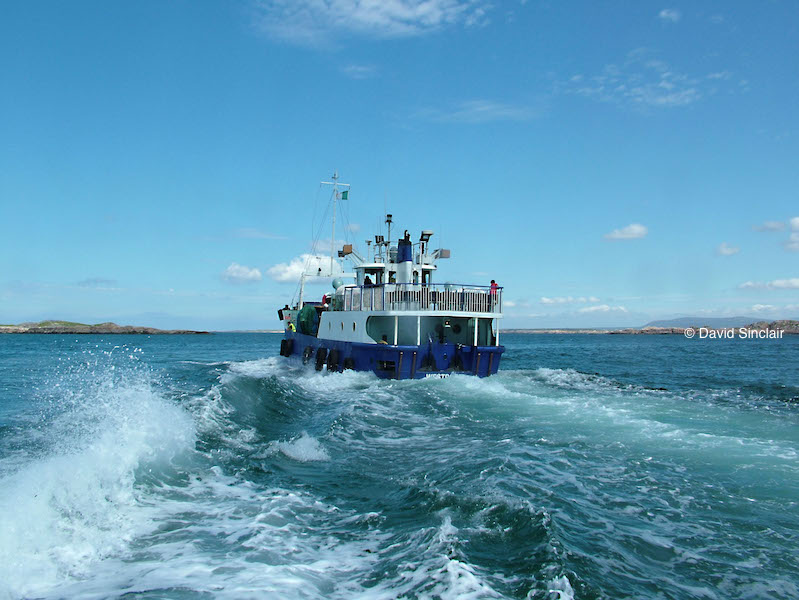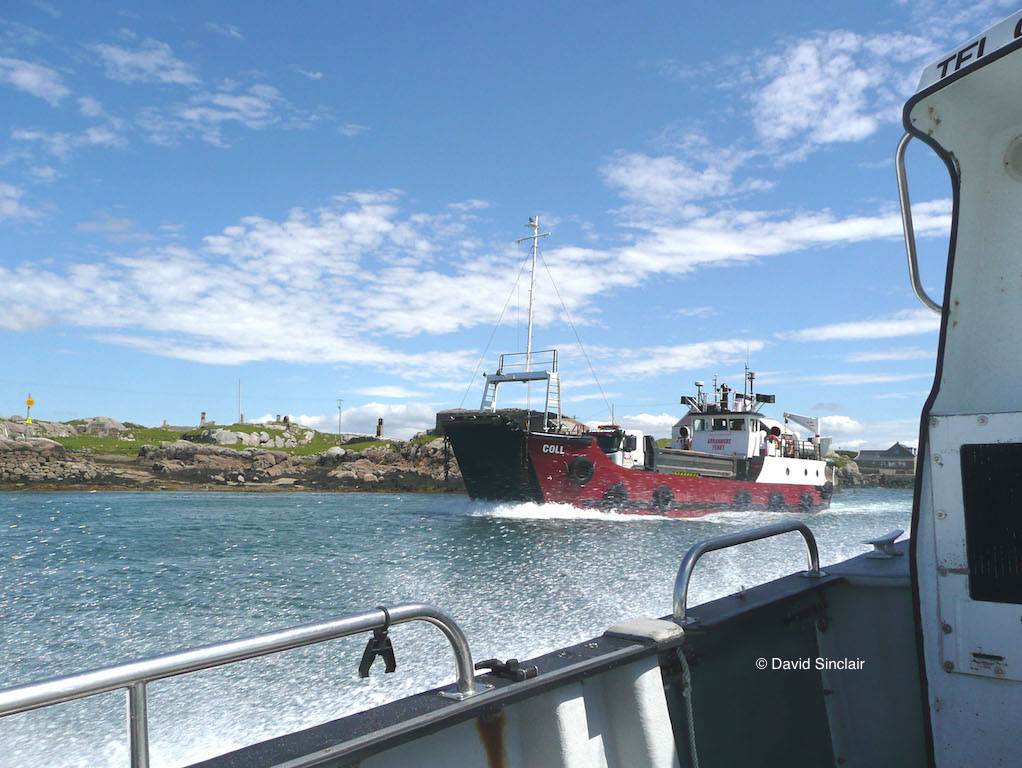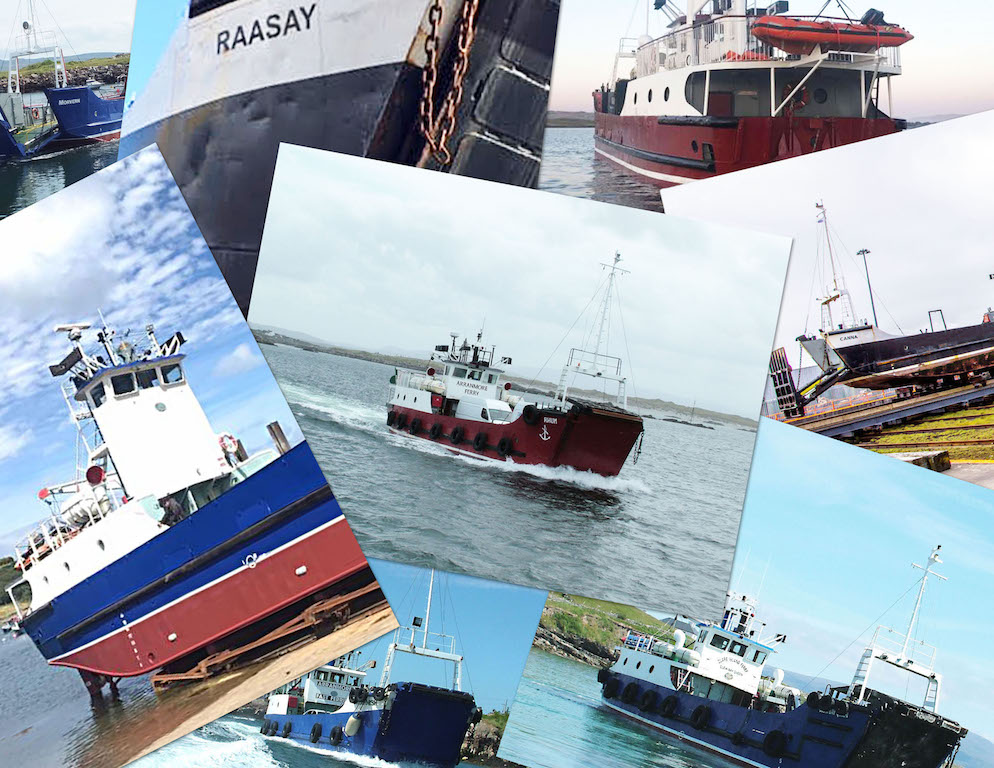
Morvern, pictured at Burtonport in County Donegal, has had a new lease of life since her recent lengthening
The title of David Sinclair’s informative and encouraging presentation to our March meeting was ‘Clyde Built — Built to Last’. He was referring to the eight ‘Island’ class ferries which used to ply the waters off Scotland’s west coast and have all found new homes in Ireland. Here is Stuart Craig’s personal view of the evening.
A Rum, a good Canna ’Bru and an Eigg is what I would Coll a good sailors’ breakfast, at least that’s what Raa’say. And that’s the worst I can do trying to make a sentence out of the ‘Island’ class ferry names.
Before you throw your laptop out of the window, or cancel your subscription, I promise no more bad jokes, but I couldn’t resist that introduction to what was a lovely presentation by CRSC member David Sinclair at Jurys Inn, Glasgow, on Wednesday 13 March.
David has kept himself, and now us, up-to-date with the fate of all eight ‘Island’ class vessels as they left the CalMac fleet for Irish ‘pastures’ new. His research evidently involved frequent criss-crossing back and forth across the Irish Sea, to photograph and sail on the little ships, or simply to turn up and be nosey as to their whereabouts.
They were built by Lamonts of Port Glasgow between 1972 and 1976, and I personally sailed on all of them apart from the the oldest, Kilbrannan, to an assortment of far-flung destinations on Scotland’s west coast. It was heartening to learn from David that all eight still serve far-flung places – around the island of Ireland.
Let me list them: Kilbrannan (1972), Morvern (1972), Bruernish (1973), Coll (1973), Rhum (1973), Eigg (1974), Canna (1975), Raasay (1976). If you want to find out what they did during their CalMac careers, then take six months off work and research CRSC’s annual Reviews.
David’s presentation focused on their exploits round the coastline of Ireland, but we were taken on a rebounding journey back and forth between Ireland and Scotland as David kept us chronologically aligned with the progress of their careers.
A variety of operators purchased the eight ‘Island’ class vessels between 1992 and 2018. Cornelius Bonner, from the island of Arranmore in County Donegal, acquired Kilbrannan, Morvern, Coll and Rhum for his service from Burtonport. These were given red hulls.
Morvern was eventually sold on to Colm Harrington for his Bantry Bay (County Kerry) service to Bere Island, where she was given a blue hull. Canna was chartered from CalMac in 1998 to operate the Ballycastle-Rathlin route. Bruernish left CalMac in 2006, having been sold to a Mr O’Leary. She hasn’t yet joined the Ryanair fleet, however, as she is still employed on various duties on the west coast of Ireland.
Kilbrannan, renamed Arainn Mhor, was sold on in 2008 to Clare Island Ferry Company (County Mayo), where she received another new name, Clew Bay Queen. Here she is operated by the O’Grady family who have been in the ferry business since 1880.
In 2017 a new ship was built for the Rathlin Island service (Spirit of Rathlin) and Canna was sold to Mr O’Leary at Burtonport. The last of the class to leave CalMac were Raasay and Eigg, in 2018. The former is now at Cleggan (County Galway) and the latter has joined Coll at Clare Island.
David illuminated his presentation with some gorgeous images of his subjects – many were passing shots taken from other vessels. I particularly liked his use of maps to demonstrate where the craft are now.
He is clearly respected by the various owners of the craft, as he showed us pictures of parts of the vessel that no ordinary photographer can reach. He once paid 45 Euros for a taxi ride, and then a ferry hop, to see a forlorn Morvern grounded on the shoreline. Such is his kudos that the owner hauled the little ship out into the bay so that David could get a better photograph. What a great idea — next time I’m up at Stornoway I’m going to ask if Loch Seaforth can be spun out in the harbour for a better video shot!
What was particularly heartening was to see that all of the ‘Island’ class vessels are now lovingly cared for, and indeed upgraded. Several have had their boat decks extended to provide attractive seating areas. They have been re-engined and, in the case of Morvern, rescued from her ‘forlorn’ state and extended in length for service for her next owners, Arranmore Ferries.
Their paintwork, be it red or blue, looked fresh and attractive in David’s pictures — or maybe that was due to the quality of his photography. Interestingly, all but Kilbrannan have retained their original names.
Their longevity, David suggested, was due to the fact they were ‘Clyde built…..built to last’.
The vote-of-thanks was given by Douglas Brown, who summed up well when he pointed out that “I learned a lot tonight”. I think we all did: well done, David.
However I was left with two unanswered questions. Why were the Caley lions on Raasay’s funnels facing in the opposite direction to the other member of the CalMac fleet? And how many episodes of Father Ted will I have to watch to see one of the ‘Island’ class showing up on Craggy Island?
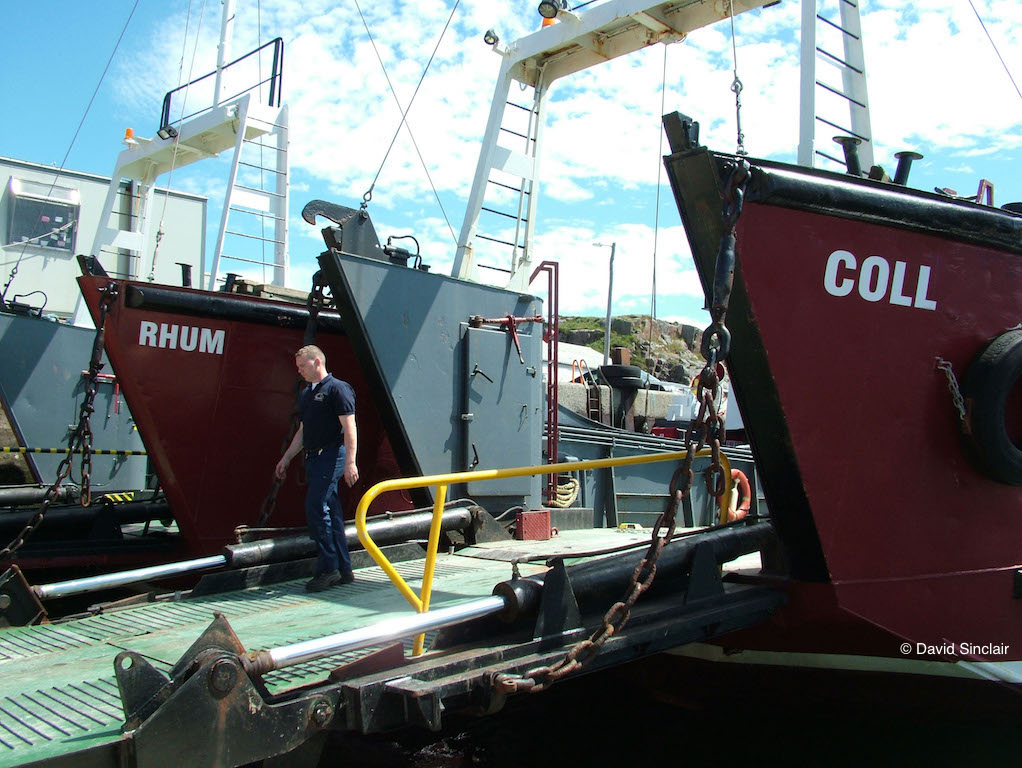
Rhum and Coll at Burtonport in County Donegal, where they provide a service to the island of Arranmore
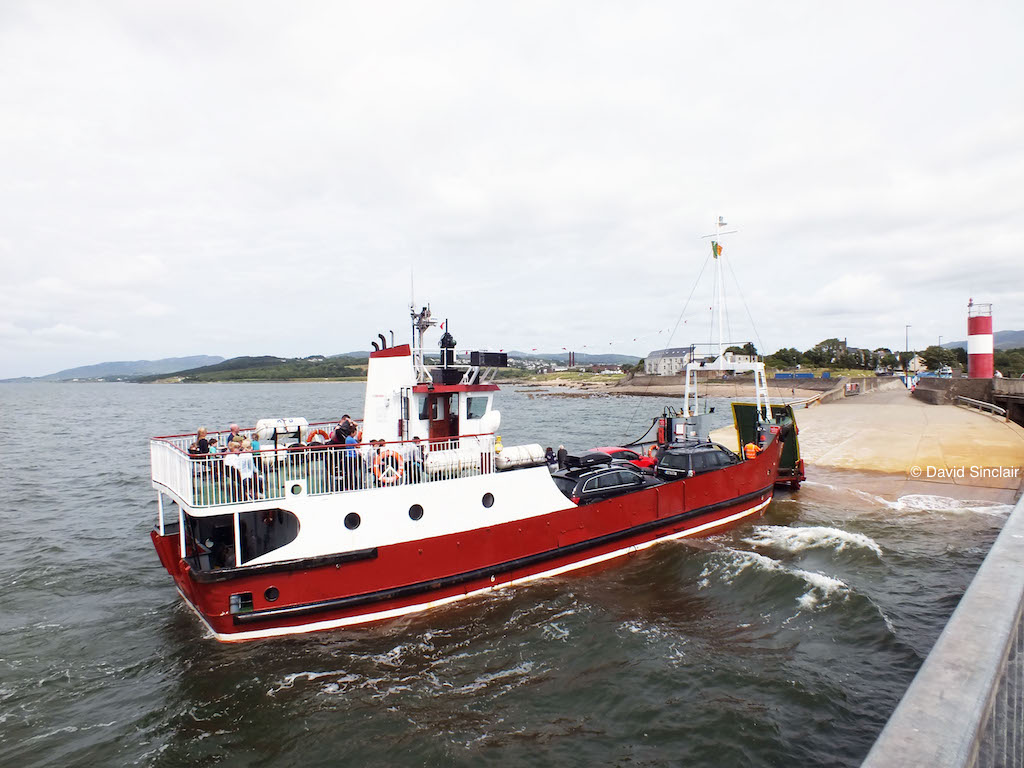
Coll at Buncrana, County Donegal: the aft extension of her top deck has created deck space for passengers
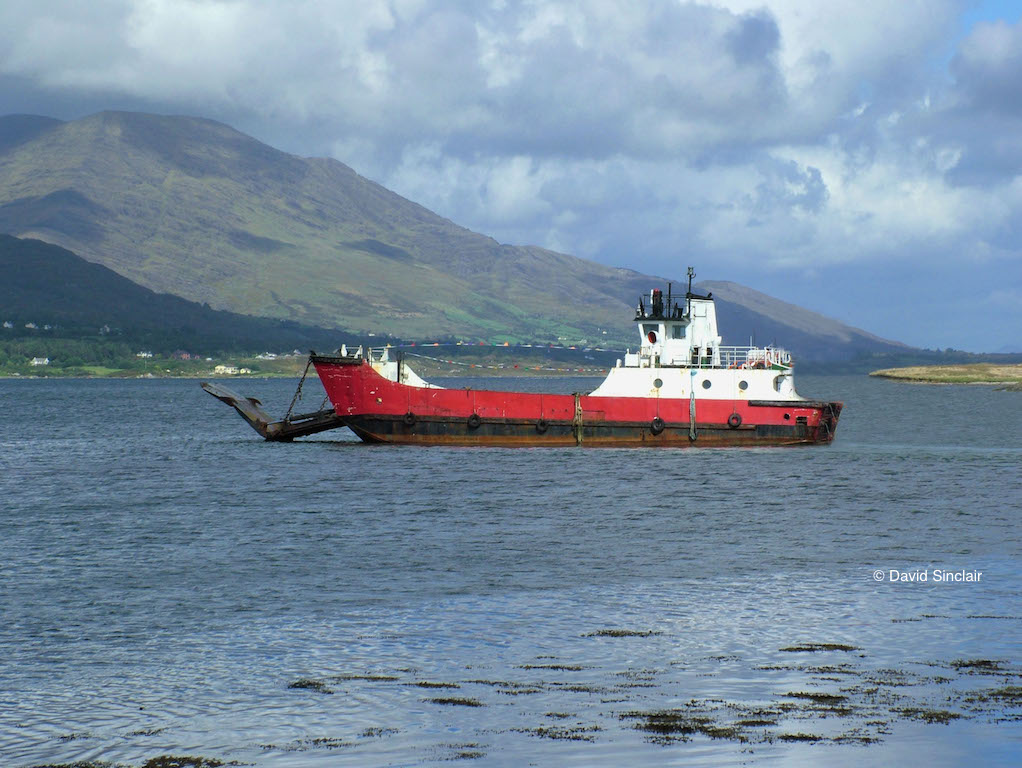
When David Sinclair visited a forlorn Morvern in County Bere, she was towed into the bay so that he could get a decent photo. She is now back in service, lengthened and rejuvenated, at Burtonport

After his talk David Sinclair (left) was congratulated by John Whittle (centre), CalMac General Manager when the eight ‘Island’ class vessels were commissioned, and Cameron Wilson (right), a CRSC member who was attending his first Jurys Inn meeting — and who was at Hunter’s Quay last May to see Eigg, the last ‘Island’ class ferry to be sold from Scotland, heading out from the Holy Loch on her voyage to Ireland
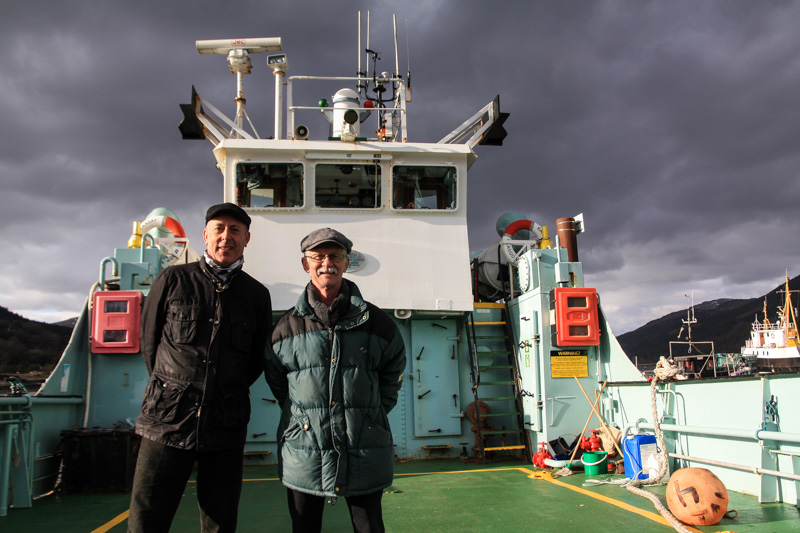
On Tuesday 26 February 2018 CRSC members Stuart Craig and Gordon Law were invited to take part in a CalMac photoshoot marking the decommissioning of the last two ‘Island’ class ferries, Eigg and Raasay, before their sale to Ireland. They were pictured on Raasay
Read Robert Cleary’s review of the ‘Island’ class ferries in Scotland here.
Join CRSC here for £10 and receive all the benefits — discounted prices, exclusive magazines, special events, meetings, cruises.
Published on 14 March 2019












